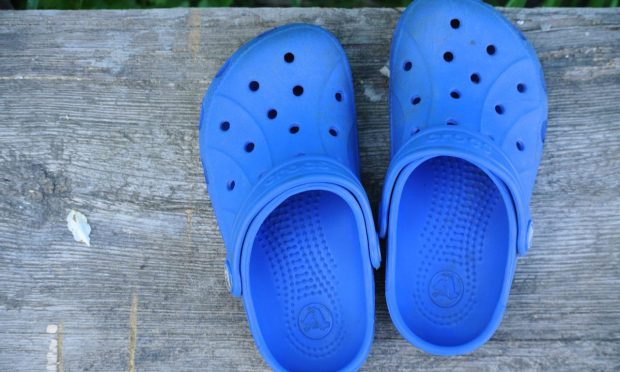Crocs Says Demand ‘Way Beyond’ Supply Amid Factory Closures, Supply Chain Snags

Crocs executives say they remain on track to reach both long- and short-term sales goals despite supply chain headwinds as demand for the polarizing footwear continues to outpace supply.
CEO Andrew Rees, on a conference call with analysts and investors Thursday (Oct. 21) said the company has seen direct-to-consumer (D2C) sales increase by 60% compared to 2020 and 90% versus 2019, with demand in the channel coming from both new and existing customers.
“We’re very confident and optimistic about the consumer activity that we see both online and in store,” Rees said.
Last month, Crocs laid out a strategic plan to reach $5 billion by 2026, which translates to a compound annual growth rate (CAGR) of 17%. Half of those sales are expected to come from digital channels, with an increasing focus on expanding in Asia, which Rees has said will likely be Crocs’ fastest-growing region.
Read more: Crocs’ Path to $5B in Sales Paved by Digital Growth, Asia Expansion
Rees said the company is confident it can achieve at least 20% revenue growth into the next year, though that ability may be limited by how much product Crocs can import into the U.S., Europe and Asia.
“We’re clearly seeing demand way beyond what we’re able to supply given some of the supply disruptions, and just the overall scaling of our supply chain,” Rees said. “We think we can solve that over time, but we can’t solve that in the short term.”
Officially, Crocs recorded nearly $626 million in revenue in the third quarter, up 73% compared to 2020. Digital sales grew 69% year-over-year and 129% on a two-year stack, representing 37% of revenues this year compared to 38% in 2020 and 32% in 2019.
Broken out by channel, D2C accounted for $316 million of the Q3 revenue while wholesale revenue represented the other $310 million having increased 88% year-over-year and 111% compared to two years ago.
Shifting Shipments
Rees told analysts that most of Crocs’ factories in Vietnam, where about 70% of its 2021 production was expected to come from, are operational, though they’re in various stages of restarting. COVID-19 cases across the country forced factories to close for several weeks; Nike last month estimated it had lost 10 weeks of production because of said closures.
See: Factory Closures Cause 10-Plus Weeks of Lost Production for Nike
To mitigate the impact of these disruptions, Reese said Crocs has shifted production capacity to other countries, such as China, Indonesia and Bosnia, and prioritized its top-selling products to improve factory throughput.
“Our shoes are really simple, and so ramping up factories can be very quick,” Rees said, noting that the classic Crocs clog only has three components, two of which are made on-site, “so you don’t have a lot of external logistics to be able to get started.”
The company is also leveraging air freight to bring in products for the 2022 spring and summer selling season and adding shipment capabilities on the U.S. East Coast to reduce dependence on West Coast ports that have seen major backups of container ships. Rees noted that the company has some ships waiting off California’s Port of Long Beach but said most of the holiday merchandise is already in the U.S.
“We don’t anticipate using significant air freight in Q4,” he said. “Most of the products that we will sell in Q4 is already here or inbound, so there’ll be a little bit but not significant.”
